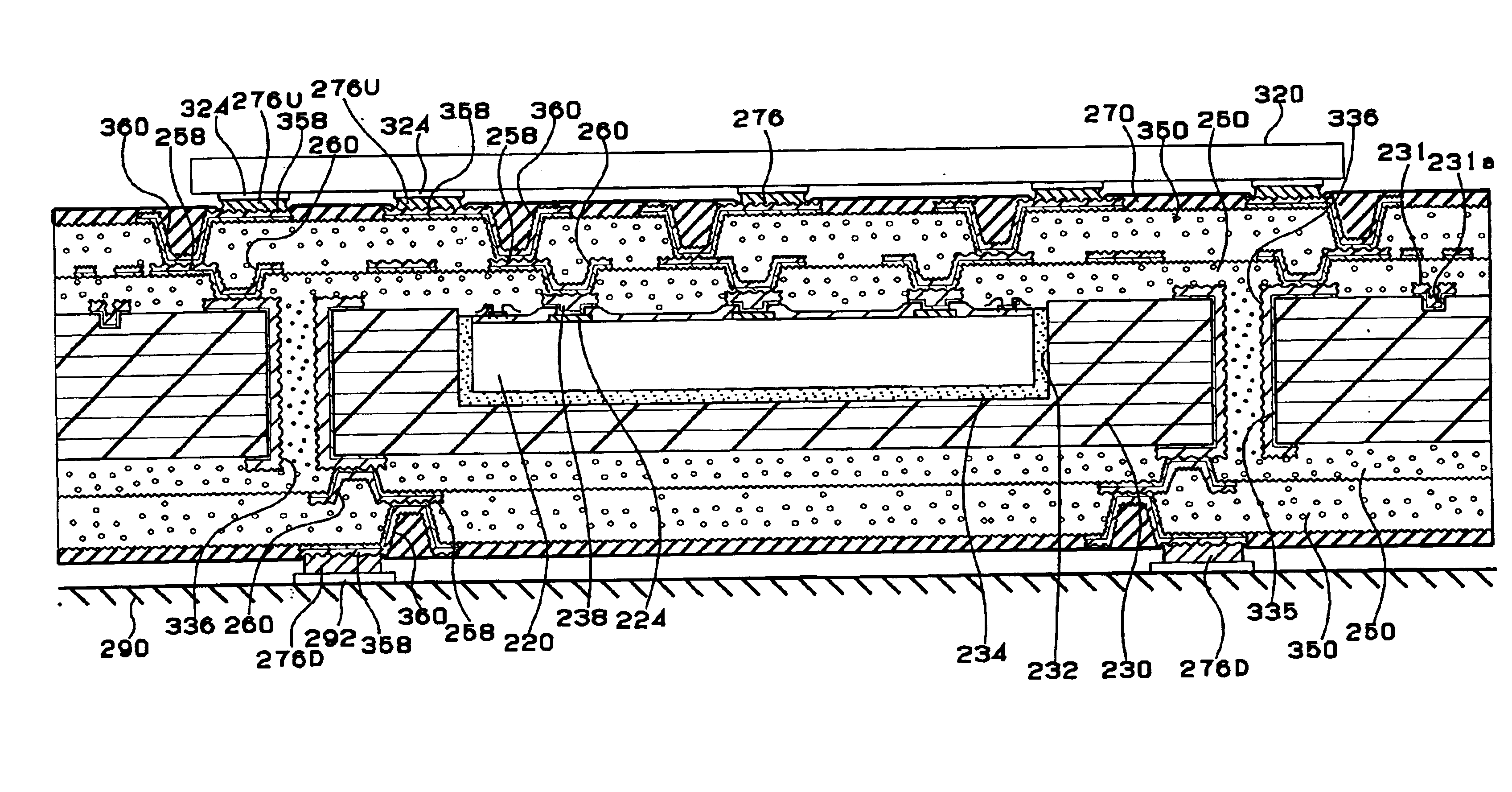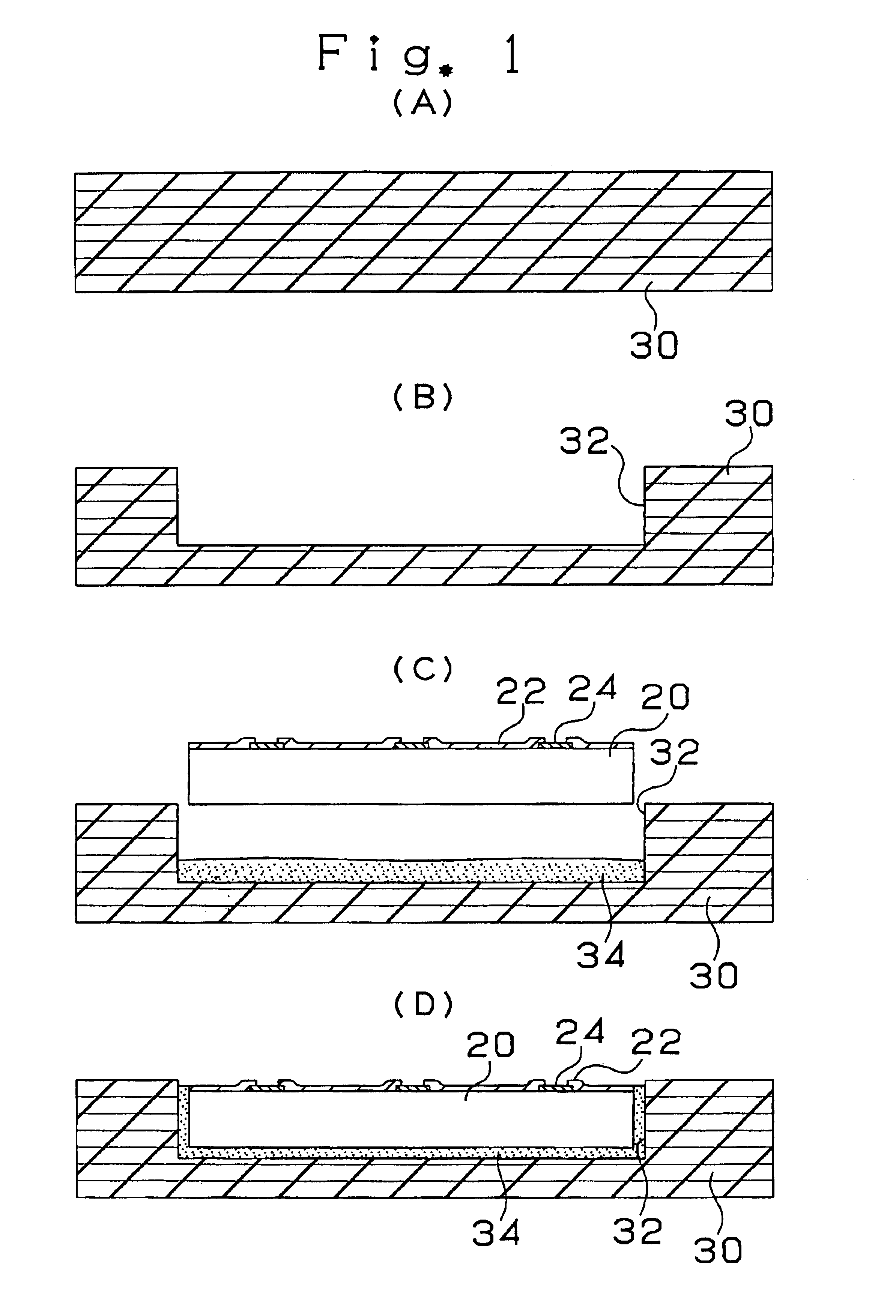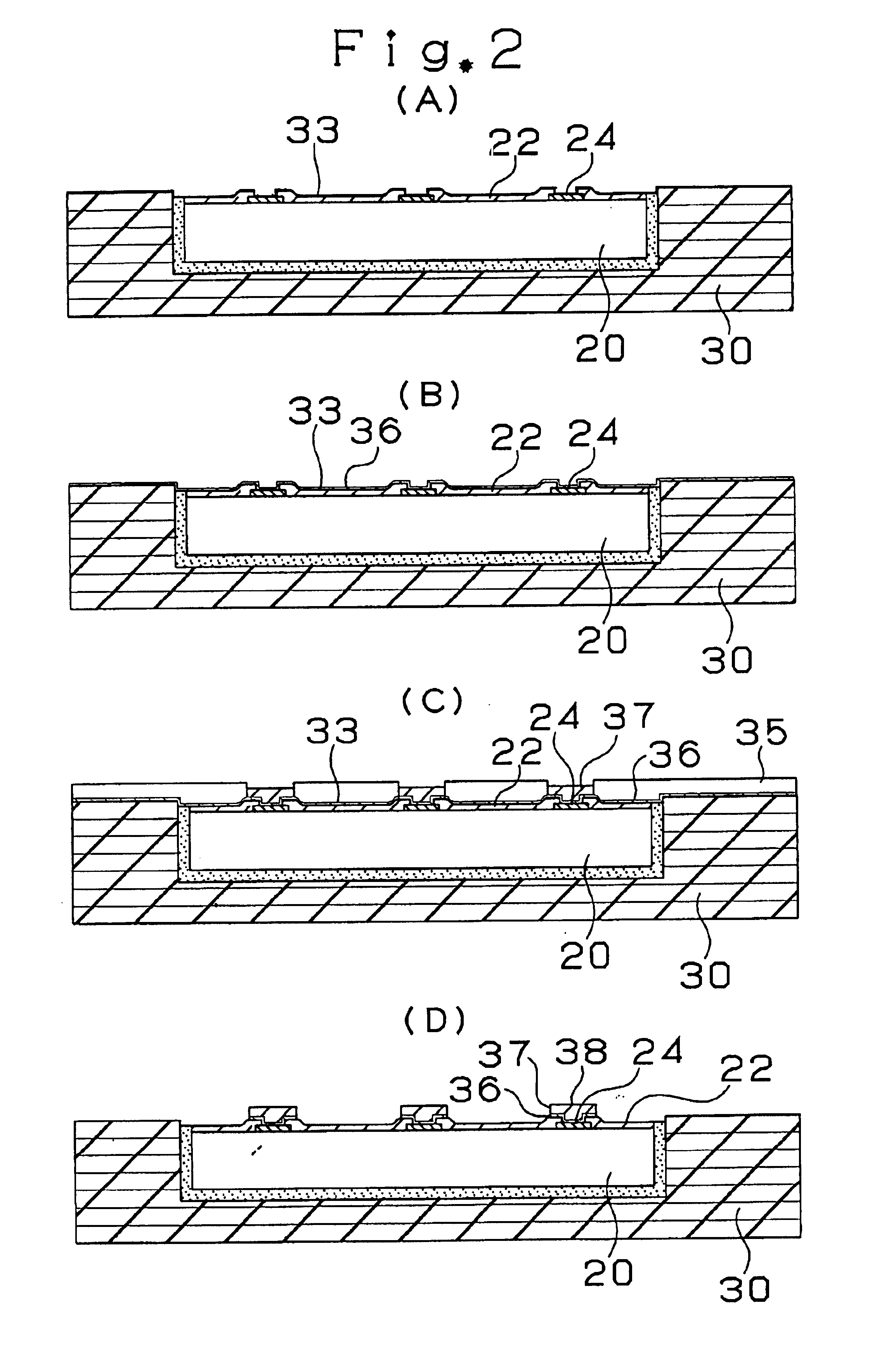Multilayer printed wiring board and method for producing multilayer printed wiring board
a technology of printed wiring board and multi-layer printing, which is applied in the direction of printed circuit aspects, printed circuit non-printed electric components association, printed circuit components, etc., can solve problems such as ic chip reliability degradation, ic chip eroded, and printed circuit board to ic chip cut off or cause malfunctions
- Summary
- Abstract
- Description
- Claims
- Application Information
AI Technical Summary
Benefits of technology
Problems solved by technology
Method used
Image
Examples
first embodiment
[First Embodiment]
[0099]First, the constitution of a multilayer printed circuit board according to the first embodiment of the present invention will be described with reference to FIG. 6 showing the cross-sectional view of a multilayer printed circuit board 10.
[0100]As shown in FIG. 6, the multilayer printed circuit board 10 consists of a core substrate 30 containing therein an IC chip 20, an interlayer resin insulating layer 50 and an interlayer resin insulating layer 150. Via holes 60 and conductor circuits 58 are formed on the interlayer resin insulating layer 50. Via holes 160 and conductor circuits 158 are formed on the interlayer resin insulating layer 150.
[0101]The IC chip 20 is covered with a passivation film 22 and die pads 24 each constituting an input / output terminal are provided in the openings of the passivation film 22. A transition layer 38 is formed on each die pad 24 made of aluminum. The transition layer 38 consists of three layers of the first thin film layer 33,...
second embodiment
[Second Embodiment]
[0169]Next, the constitution of a multilayer printed circuit boar according to the second embodiment of the present invention will be described with reference to FIG. 18 showing the cross-section of a multilayer printed circuit board 210.
[0170]As shown in FIG. 18, the multilayer printed circuit board 210 consists of a core substrate 230 containing therein an IC chip 220, an interlayer resin insulating layer 250 and an interlayer resin insulating layer 350. Via holes 260 and conductor circuits 258 are formed on the interlayer resin insulating layer 250. Via holes 360 and conductor circuits 358 are formed on the interlayer resin insulating layer 350.
[0171]The IC chip 220 is covered with a passivation film 222, and die pads 224 each constituting an input / output terminal and positioning marks 223 are provided in the respective openings of the passivation film 222. A transition layer 238 mainly consisting of copper is formed on each die pad 224.
[0172]A solder resist la...
third embodiment
[Third Embodiment]
[0202]Next, the constitution of a multilayer printed circuit board according to the third embodiment of the present invention will be described hereinafter with reference to FIG. 26 showing the cross section of a multilayer printed circuit board 410.
[0203]As shown in FIG. 26, the multilayer printed circuit board 410 consists of a core substrate 430 containing therein an IC chip 420, an interlayer resin insulating layer 450 and an interlayer resin insulating layer 550. Via holes 460 and conductor circuits 458 are formed on the interlayer resin insulating layer 450. Via holes 560 and conductor circuits 558 are formed on the interlayer resin insulating layer 550.
[0204]The IC chip 420 is covered with an IC protective film (made of passivation+polyimide) 422 and aluminum die pads 424 each constituting an input / output terminal are provided in the respective openings of the IC protective film 422. An oxide film 426 is formed on each die pad 424. A transition layer 43 B is...
PUM
| Property | Measurement | Unit |
|---|---|---|
| Area | aaaaa | aaaaa |
| Dissociation constant | aaaaa | aaaaa |
| Dissociation constant | aaaaa | aaaaa |
Abstract
Description
Claims
Application Information
 Login to View More
Login to View More - R&D
- Intellectual Property
- Life Sciences
- Materials
- Tech Scout
- Unparalleled Data Quality
- Higher Quality Content
- 60% Fewer Hallucinations
Browse by: Latest US Patents, China's latest patents, Technical Efficacy Thesaurus, Application Domain, Technology Topic, Popular Technical Reports.
© 2025 PatSnap. All rights reserved.Legal|Privacy policy|Modern Slavery Act Transparency Statement|Sitemap|About US| Contact US: help@patsnap.com



